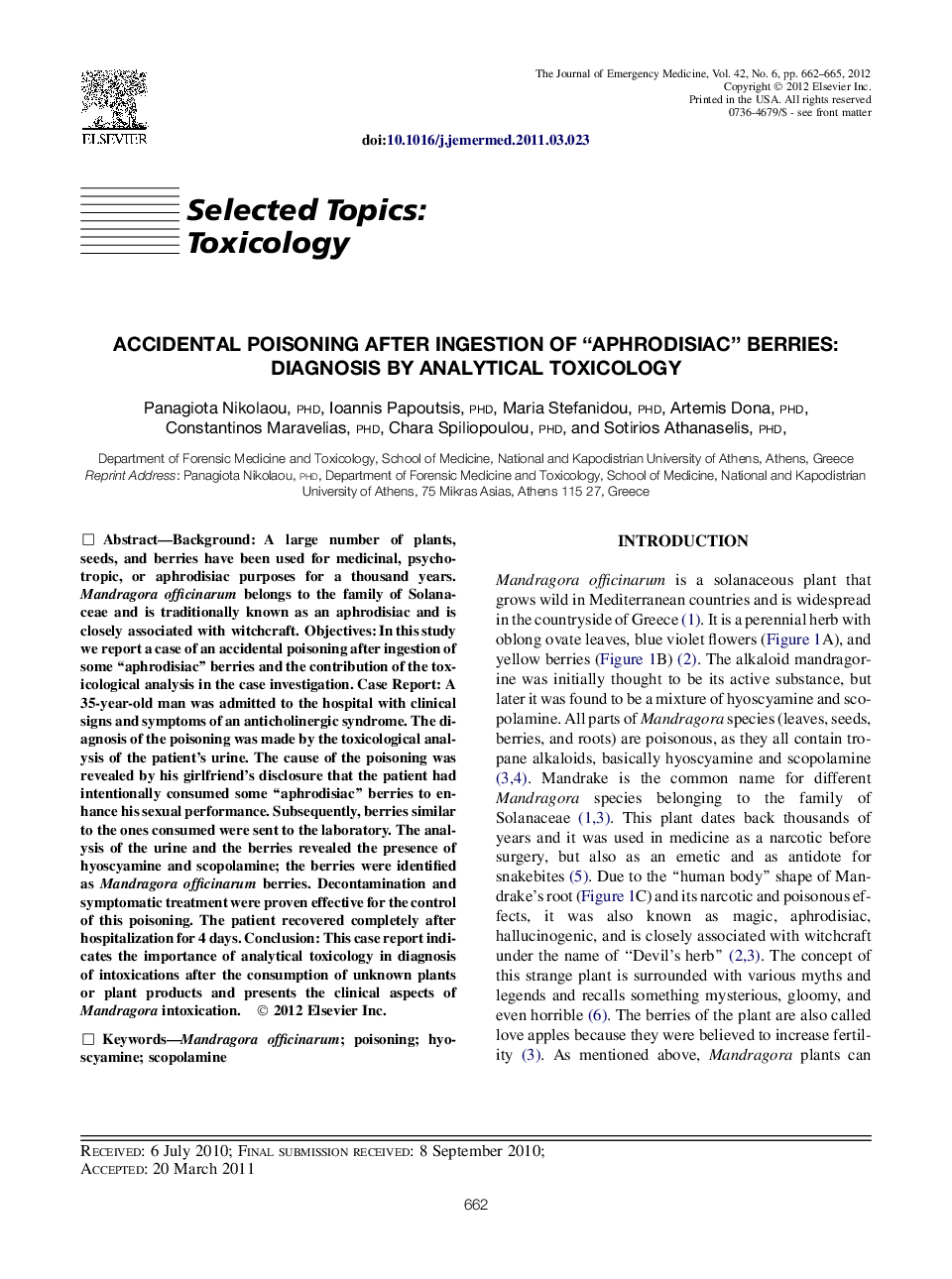| Article ID | Journal | Published Year | Pages | File Type |
|---|---|---|---|---|
| 3247041 | The Journal of Emergency Medicine | 2012 | 4 Pages |
BackgroundA large number of plants, seeds, and berries have been used for medicinal, psychotropic, or aphrodisiac purposes for a thousand years. Mandragora officinarum belongs to the family of Solanaceae and is traditionally known as an aphrodisiac and is closely associated with witchcraft.ObjectivesIn this study we report a case of an accidental poisoning after ingestion of some “aphrodisiac” berries and the contribution of the toxicological analysis in the case investigation.Case ReportA 35-year-old man was admitted to the hospital with clinical signs and symptoms of an anticholinergic syndrome. The diagnosis of the poisoning was made by the toxicological analysis of the patient’s urine. The cause of the poisoning was revealed by his girlfriend’s disclosure that the patient had intentionally consumed some “aphrodisiac” berries to enhance his sexual performance. Subsequently, berries similar to the ones consumed were sent to the laboratory. The analysis of the urine and the berries revealed the presence of hyoscyamine and scopolamine; the berries were identified as Mandragora officinarum berries. Decontamination and symptomatic treatment were proven effective for the control of this poisoning. The patient recovered completely after hospitalization for 4 days.ConclusionThis case report indicates the importance of analytical toxicology in diagnosis of intoxications after the consumption of unknown plants or plant products and presents the clinical aspects of Mandragora intoxication.
